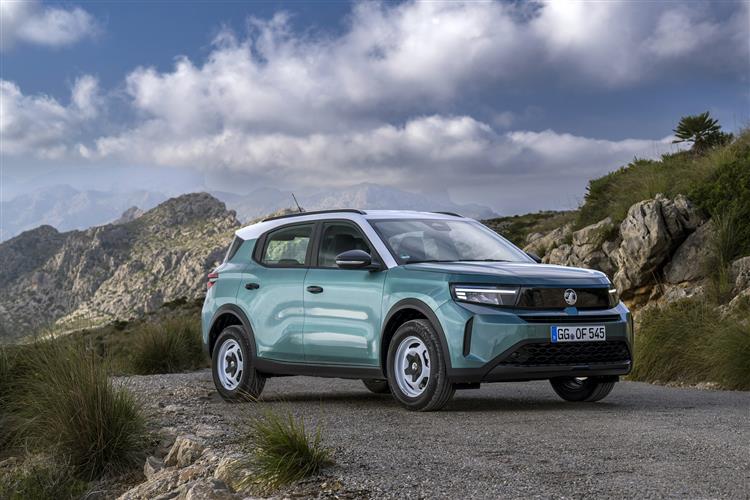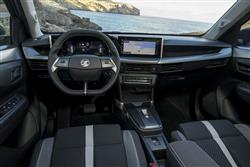SENSIBLY HY ASPIRATIONS (some text hidden) --NONE--
By Jonathan Crouch
Is Vauxhall's little Frontera SUV really at its best in Hybrid form? Jonathan Crouch decides.
Ten Second Reviewword count: 35
The usual Stellantis Hybrid three cylinder engine gets another outing, this time in Vauxhall's small SUV, the Frontera. It's a sensible, frugal confection. Whether it's worth choosing over the identically-priced EV version is another question.
Backgroundword count: 111
It would have been easy for you to miss the re-introduction by Vauxhall of a model name from the past - Frontera. But if you haven't, like the small Stellantis SUV this Griffin brand crossover has become and find yourself agonising between Hybrid and full-electric drivetrains in choosing one, then this review is for you. The Hybrid version is our focus here, mainly because in a market currently sceptical of EVs, it's this electrical combustion version that will primarily drive Frontera sales. All the same engineering features in this segment in two other Stellantis models, the Citroen C3 Aircross and the Fiat Grande Panda. So why choose this Vauxhall? Good question.
Driving Experienceword count: 222
Since you might already know about this car's Hybrid engine, so prolific is it across Stellantis brand models, we'll start with drive dynamics. It's difficult not to compare these against those of the Frontera Electric since the two models are identically priced. Of the two cars, you can expect the EV version to be better to drive, thanks to its lower centre of gravity and more instant torque. But since drive dynamics aren't really a Frontera strength, that point of difference may be irrelevant, particularly in the class of car often primarily bought to look good at the gym. The engineering behind this model's Hybrid powerplant is anything but irrelevant. It's actually a mild hybrid, but mimics full-Hybrid tech in a lot of the ways that really matter. So the battery can take over from the engine in town travel; and be used exclusively in low-speed manoeuvring. This 48V Hybrid powerplant will primarily sell in 110PS form (with 205Nm of torque) but can also be had in 145PS guise (with 230Nm). Either way, you get a 1.2-litre three cylinder unit driving the front wheels and combining with a 28hp 48V motor built into a clever 6-speed dual clutch DSC6 auto gearbox. The 110PS model makes 62mph in 11s en route to 112mph. The 145PS variant improves those figures to 9s and 118mph.
To see the full road test text contact us on 0330 0020 227
Pictures (high res disabled)

.jpg)
|
.jpg)
|
.jpg)
| |||
.jpg)
|
.jpg)
|
.jpg)
| |||
.jpg)
|

|
Statistics (subset of data only)
Min |
Max |
|
Price: |
£24,855.00 (At 1 Oct 2025, Design 110PS) |
£29,565.00 (At 1 Oct 2025, Ultimate 145PS) |
CO2 (g/km): |
119 |
|
Max Speed (mph): |
118 (Hybrid 145PS) |
|
0-62 mph (s): |
9 (Hybrid 145PS) |
|
Combined Mpg: |
53.3 |
|
Boot Capacity (l): |
450 |
|
Scoring (subset of scores)
Category: Hybrid, Plug-in, Electric & Hydrogen
| Performance | |
| Handling | |
| Comfort | |
| Space | |
| Styling, Build, Value, Equipment, Depreciation, Handling, Insurance and Total scores are available with our full data feed. | |



